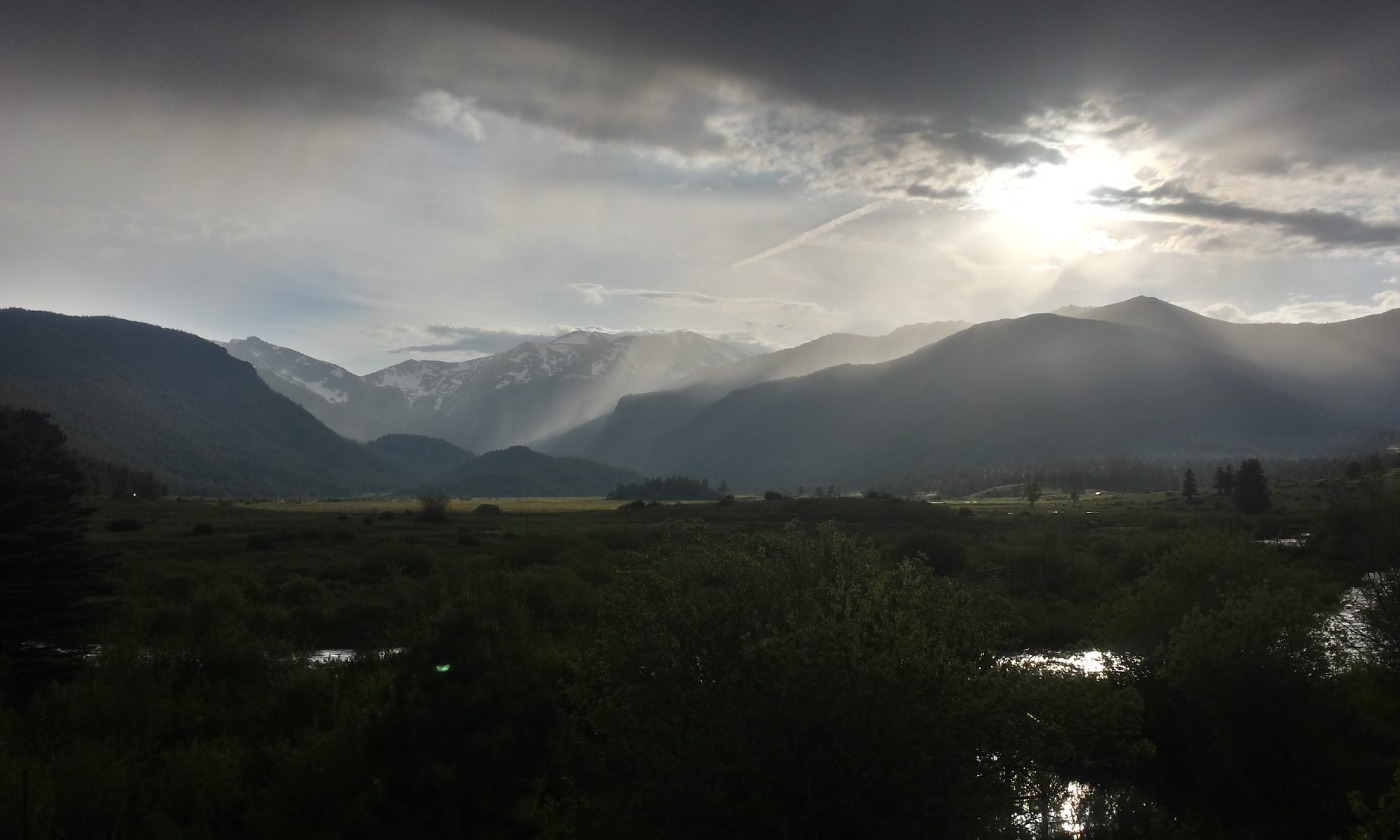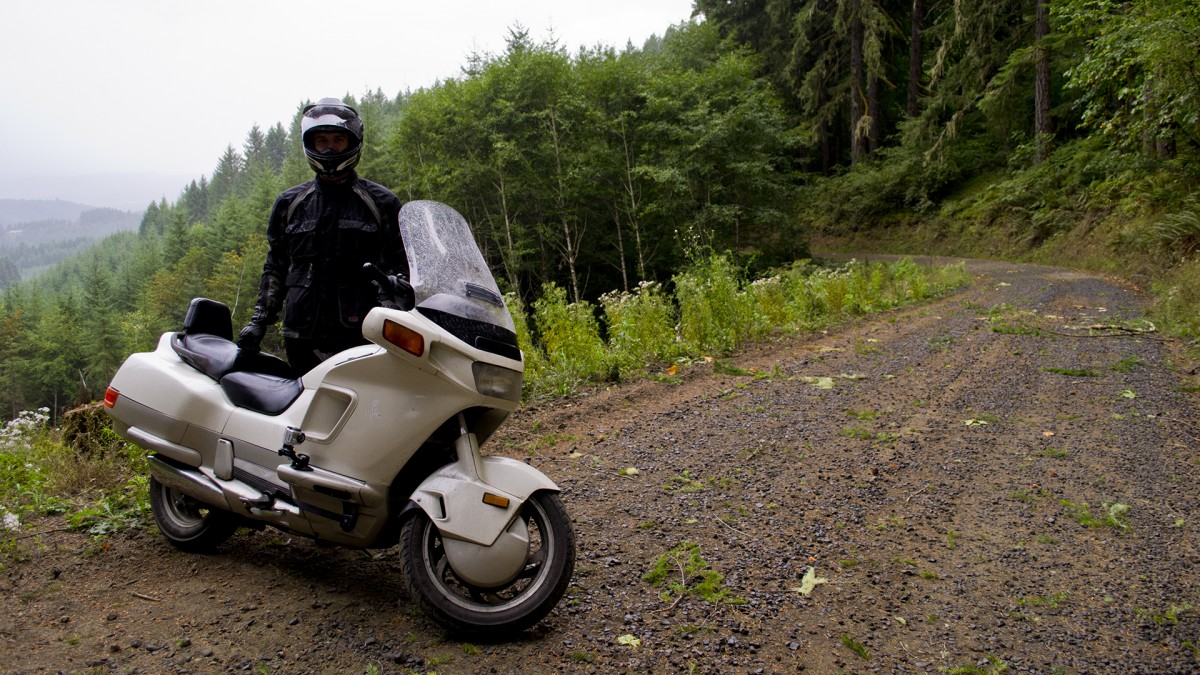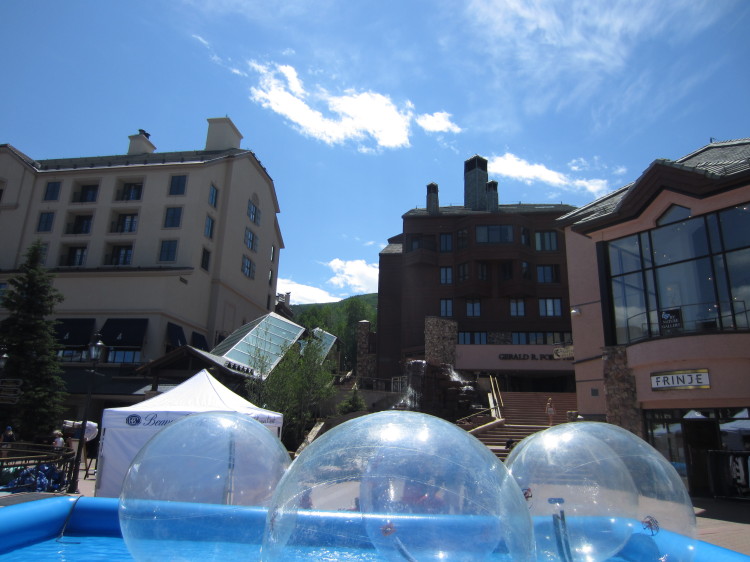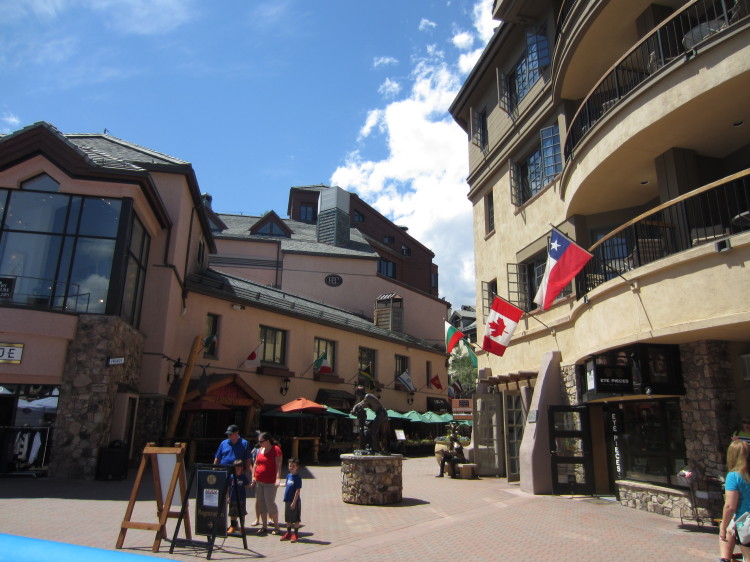When the Honda Pacific Coast was originally released in 1989, the bikes came standard with Dunlop K177 tires which later were upgraded to Dunlop K555 tires. The OEM tire size is 120/80-17 front and 140/80-15 rear. The other main tire that people used for many years is the Metzeler ME880. While many people continue to use both the Dunlop and Metzeler tire options, many PCers have begun experimenting with other tires with good success. This post reviews tire options for the Honda Pacific Coast.
Do Your Own Research — Don’t Rely on Me
Before you get too far into this post, I want to make absolutely clear that I am not a professional engineer nor am I a motorcycle tire subject matter expert. I am quite literally a guy who likes the Honda Pacific Coast PC800 motorcycle and enjoys helping compile information that the PC800 community has learned over the years.
The information collected below has been reported to me by PC800 riders over more than a decade. I am only compiling the information in one place. I am not recommending anything in particular. I give my untrained opinion in a few places but any statements I make should not be treated as authoritative in any way.
Before you choose a tire for your bike, I strongly suggest you do research online and talk to your local motorcycle shop about appropriate tire options and the trade-offs involved. The Adventure Rider Radio Podcast has a good episode about motorcycle tires that is likely worth your time to listen to. For instance, while there is a large “dark side” community that uses car tires on motorcycles, there is some very good and growing evidence that this isn’t such a great idea. There are some other things to consider as well which that podcast mentions that I had never heard of before.
Bottom line: I take no liability for what you do or don’t do to your bike. This is just a collection of people’s experiences with their motorcycles. In the immortal words of a friend, “don’t be an idiot in the park” or in other words it’s your own fault if you do something or don’t do something based on whatever I have on my website. Use your own judgement and talk to experts before you make a decision.
What Tires I Run
I still run Metzeler ME880 tires on my bike because I like them and, in spite of chunking issues I had with my last two sets, I find them to be good tires. However, it sounds like the ME880 might be being phased out and the ME888 tires will be the new Metzeler product that is rated for our Honda Pacific Coasts. Such is life with an oddball bike that doesn’t share a very common tire with other bikes.
I have ridden on Dunlop tires and found them to be a little squirrley on certain road surfaces. They also weren’t great, in my opinion, in the rain. But on the right road surfaces, they felt like they were glued to the road, especially in corners.
I rode on a “dark side” bike for a few miles to see what all of the hubbub I kept reading online was about. I found the experience to be pleasant and did not encounter any issues with cornering or any other problems that some have reported. While I was dark side-curious for some time, I have never put a car tire on my bike and have decided that even though it might save a little money, it isn’t worth it to me to have a non-motorcycle tire that’s not approved for what I am doing on my motorcycle.
The other tires you’ll find below I have not personally tried. Others have tried them though which is why they’re on the list. Someone with a PC800 at some point put that tire on their bike and found it decent enough to mention it on the iPCRC or the Facebook group or they emailed me directly. Both are outstanding resources for PC800 riders and a good place to ask tire-related questions.
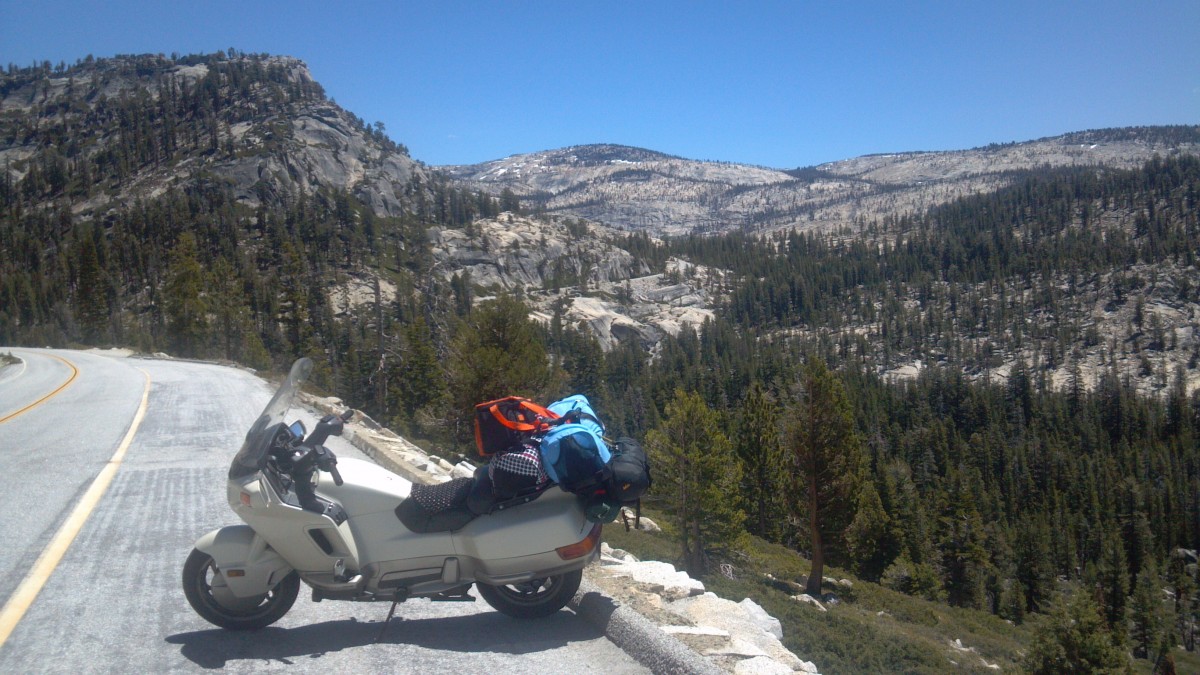
A Note on 1989 Bikes and Rear Tire Size
As many of you probably already know, the 1989 model year of the Honda Pacific Coast has a smaller trunk liner and fender well than the later model years. Quite a few of these bikes suffered from the fender liner being eaten by the tire. My bike has a nice fiberglass patch on the trunk liner from where that happened earlier in its life. For this reason, it is important that 1989 bikes don’t use a tire wider than 140mm (or a higher aspect ratio — that’s the second number in the tire code. See this website for more information.) without really closely examining the fit. Later model years can likely get away with a wider tire width although it’s still a little iffy at times.
A Note on Tire Diameter, the Rear Swingarm, and the Front Fender Plastics
It is worthwhile to note that the height of your tires does matter with the PC800. If you have a tire that has a larger aspect ratio (the second number in the tire code — for instance, 120/80-17 indicates the aspect ratio is 80% of the tire’s width measured at the widest point which in this case is 120mm, meaning the tire is 96mm high from the bottom of the tire to the top as measured on one side — see this website for more details) or a larger width (the first number) than what is OEM recommended, the tire can end up being larger to the point where it may come into contact with the rear swingarm or the front fender plastics. Neither situation is very desirable. If you end up with a tire that is barely making contact (check especially after a ride because it isn’t always evident when you have the bike parked), reducing air pressure in the tire by 2-3PSI might help the situation.
A Note on Using Non-OEM-Recommended Tires
Any activity involving motorcycles carries a degree of risk with it. Moving away from OEM-recommended tires carries potentially more risk than sticking with the OEM recommendations. Especially those considering running tires in non-standard orientations (backwards from the indicated arrow), non-standard positions (a rear tire on the front), or of non-standard types (car tires), this is all a bit experimental. While many PCers have many thousands of miles logged on many non-OEM-recommended tires, your mileage and experience may vary. It’s your choice what tire you use. The information on this page is only a compilation of what I have observed other PC800 riders use.
A Note on Tire Age Codes
Regardless of what tires you choose, make sure to check the tire age codes. Depending on who you ask, a tire shouldn’t be used more than three to five years after when it was manufactured. This is due to the rubber compounds that make the tire “sticky” and stick to the road becoming stiff and more slippery with age. I have personally experienced this on another bike I used to own where I was going around a corner when the rear end started to wash out. I saved the bike and rode home where I looked at the tire and discovered that the tire had become slick and hard, and that the tire was quite old.
A typical tire date code looks like this: DOT EUAB C54 2110
If your tire has a three digit code rather than a four digit code at the end of that string of letters and numbers, THROW THAT TIRE AWAY because it was produced prior to the year 2000 and it is UNSAFE to ride.
The numbers we care about are the last four in the sequence. In the example above, that is 2110. The first two numbers indicate which week the tire was manufactured. In this case, it was the 21st week of the year. The second two numbers indicate the year. In this case, 2010. This tire is too old to keep riding and should be replaced.
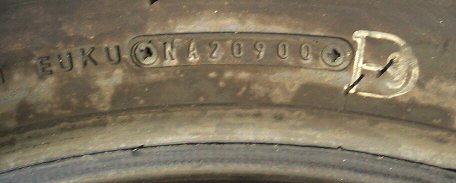
Tire Options
| Tire Combination | Manufacturer (Front/Rear) | Model/Size(Front/Rear) | Bias or Radial? | Recommended Inflation Pressure (Front/Rear) | Expected Mileage | Other Notes |
| OEM From the Factory and Later OEM Recommendations | ||||||
| “Dancing Dunlops” | Dunlop | K555 120/80-17 | Bias | 5000-9000 Miles | These tires were what came on the PC800 straight from the factory. While they had a good reputation for the first 10 or 20 years of PC800s being on the road, a manufacturing shift to Indonesia caused a marked decrease in mileage. Dunlop tread pattern has a tendancy to make a PC800 wander as it goes down the road which some riders can feel unnerved by. I have heard it described as if the bike dances to its own tune sometimes. | |
| Dunlop | K555 140/80-15 | Bias | 5000-9000 Miles | |||
| “Moaning Metzelers” | Metzeler | ME880 Marathon 120/80-17 | Bias | 36-40PSI | 9000-15000 Miles | Many people have loved Metzeler tires on the PC for many years. They perform well in the rain and don’t wander as much as the Dunlop tires. However, they have earned the nickname “moaning Metzelers” because they make a moaning sound when cornering. A production change to Brazil coincided with a “chunking” problem where big chunks of rubber can go missing (especially on the rear tire) after about 5,000 to 8,000 miles of riding. While several PCers have tried to engage Metzeler about the problem, no solution has been found. Be especially vigilent with Metzeler tires for cracks forming in between the tread on the rear tire. |
| Metzeler | ME880 Marathon 140/80-15 | Bias | 38-42PSI | 9000-15000 Miles | ||
| Other Motorcycle Tire Options | ||||||
| Pirelli Shoes | Pirelli | Corsa II 120/80-17 | Radial | This is a new combination being tested by Chris H. on the PC800 Facebook group. He has used the Diablo Rosso tire on his Honda Magna for a number of years with good results and is now trying it on the PC. Note that it is narrower than a stock PC tire. | ||
| Pirelli | Pirelli Diablo Rosso 140/70-15 | Radial | ||||
| Michelin Commanders | Michelin | Michelin Commander II – 120/80 B17 76H | Bias | 36PSI | Note that the rear tire WILL NOT WORK on a 1989 model year bike unless you have changed out the trunk liner for a later model year liner. | |
| Michelin | Michelin Commander II – 140/90 B15 76H | Bias | 38PSI | |||
| Battleaxe Rear on the Front | Bridgestone | Battleaxe BT45 – 120/80 r17 | Bias | 23,000+ miles | Note that this is normally a rear tire but many PCers run it on the front. People used to run these tires in reverse but more recently, people have been running them in the “correct” orientation. | |
| Excedra | Bridgestone | Excedra 120/80 r17 | Bias | 36PSI | Unknown | Gary R. on the Facebook group is using this tire with a Metzeler on the rear. |
| Kenda | Kenda | Challenger K657 – 130/90 r17 | Bias | 8,000+ miles | Note that this is normally a rear tire but a few PCers run it on the front. Usually it’s run in the direction indicated by the arrow on the tire (not the reverse way). | |
| Kenda | Kenda | Kruz K673 – 140/80 r17 | Bias | Unknown | Malcom C. uses this tire on the front of his bike. | |
| Shinko | Shinko | 230 Tourmaster – 140/90 r15 | Bias | 10,000+ | Unknown | Bob D. reports: I put a Shinko 230 Tour Master rear tire on my 1998 PC800 about 10,000 miles ago (size 140/90/15). No rubbing, no cupping, not even half worn, improved the ride greatly especially over bumps. Sticks like glue to the road under all conditions and is especially good on dirt roads. The rpm is lower at highway speeds increasing the fuel economy (55mpg alone 50 mpg with my wife on the back). I’m a daily full time rider (passed 1,000,000 miles riding years ago) and would highly recommend this tire. J&P Cycles still sells these for about $80.00 (checked the price today) really great value. |
| Shinko WM Special | Shinko | Shinko 110-80-17 | Unknown | WM Douglas F. on the Facebook group said: The front is a little narrower and the back is a little wider. Handles pretty nice tho. | ||
| Shinko | 150-80-15 | Unknown | ||||
| IRC Wild Flare | IRC | WF-920 120/80 R17 | Bias | 4,000+ miles | One PCer tried running this tire. He said it cupped very badly after a few thousand miles. Maybe with playing around with the pressure, it could be prevented from cupping out. | |
| Full Bore | Full Bore | 140/90 r15 | <unknown> | 8,000 miles | I’ve only seen a report of one PCer using this tire. | |
| Avon Roadrider AM26 | Avon | Roadrider AM26 – 120/80V-17 | Bias | 40-41PSI | 20,000-24,000 miles | |
| Avon | Roadrider AM26 – 140/80-15 | Bias | 20,000-24,000 miles | |||
| Avon Venom AM42 | N/A | N/A | N/A | N/A | N/A | A couple PCers are running this rear tire. Dave Emailed me in July 2022 and stated: I do not recommend it. I have an Avon roadrider on the front and love the tire, so I assumed the Avon Venom would be good for the rear. Traction was not as good as the Bridgstone I took off. Tire only lasted about 5000 miles. Very disappointing and not the right tire for the bike. |
| Avon | Avon Venom AM42 140/90H-15 | Bias | Unknown | |||
| Dunlop Elite 4 | Dunlop | 120/90-17 M/C 64S (FRONT) | Unknown | Unknown | ||
| Dunlop | 120/90-17 M/C 64S (REAR) | Uknown | Uknown | Expected 18k miles | From David P: [These tires] did raise the bike up being 1″ larger diameter [than OEM], on the center stand the back tire just clears the ground. The guy that put these tires on has his own shop and was a mechanic and service manager of a Honda/Harley dealer for a long time, he said mileage should be about 18K. | |
| Metzeler Roadtec 01 | Metzeler | 120/70-17 (front) | Unknown | Unknown | Unknown | From Dolf V.: Loving this tire. No modifications (on my 89)… I have an 880 on the rear… The roadtec 01 is a very nice neutral grippy modern tire. . Just… Cause it’s a 70… It’s a tiny bit harder to put the bike on the centre stand. |
| “The Dark Side” – Car Tires on a PC800 | ||||||
| BF Goodrich Radial Car Tire | BF Goodrich | P155/80R15 TA Radial | Radial | 34-35PSI | 20,000-30,000 miles | Using car tires on motorcycles is controversial but many people have been using them on PC800s. It can be difficult to find people who are willing to mount car tires on motorcycles. Often times, a Battleaxe tire is put on the front with this combination. |
| Editor’s note: These will absolutely not be a good idea on a 1989 model year with the smaller trunk liner. |
A Note on Mixing and Matching Tires
Many PC800 riders have been mixing and matching brands of tires and types of tires for a number of years. As of writing this, I have not personally received any reports of bad outcomes from mixing and matching tires. The one issue that you may run into is different tire wear rates. If you want to replace both tires at the same time like I do, you might end up throwing away one tire with a lot of life left on it to replace another tire that is at the end of its life.
While you generally won’t have an issue using a matched set of tires, it is possible that any set of tires (matched or not) might have issues. It’s a good idea to take it easy for the first 100 or 200 miles as you break in new tires and understand how they perform. Just make sure to take it easy and learn your new tires and you should be fine.
A Note on Mounting and Balancing Tires
There are two ways that I am aware of to balance motorcycle tires. A shop can either do a static balance where they put the wheel and tire on an axle shaft and slowly spin it. They change the weight balance by adding lead strips until the wheel and tire stop spinning randomly rather than at a specific (the heaviest) point on the wheel and tire. The other way to balance a motorcycle wheel and tire is with a dynamic wheel balancer that spins the wheel and determines via a computer where to add the lead weights. Almost ever car tire place balances using a dynamic balancer.
There are two other options for balancing tires that don’t involve using lead weights. The first is using a liquid that goes inside the tire. Robert C. from the PC800 Facebook group has been using Ride On Tire Protection System (TPS) liquid tire balancer for a number of years with good results. This stuff is similar to the “slime” that you can get for bicycle tires. Another option is balancing beads that also go inside the tire. With both options, the balancing of the tire happens dynamically every time you start moving. The force of the tire spinning causes the liquid or the solid beads to fling out to the edge of the tire and balance it. I’ve driven 4×4 trucks that use balancing beads but never a motorcycle. Below maybe 5 mph, the tires won’t be well balanced and you might feel just a little bit of lumpiness in the tires but after you get above about 5mph, the liquid or beads will spread out and your tires will be perfectly balanced.
I personally prefer to have my tires dynamically balanced. However, a tire guy who knows what he is doing will balance a tire just as well with a static balancer. If you’re doing your own tire changing, you also probably will be doing static balancing or maybe you’ll use a liquid or one of the solid bead options.
A Note on Valve Stems
It’s a good idea to change your valve stems when you change your tires. Over time, the rubber on the OEM valve stems can get old and cracked, and eventually fail. There are a number of options out there for new valve stems. I personally am running OEM valve stems that I bought from a Honda motorcycle shop. There are many PC800 riders who are running aluminum valve stems of several types. Who is making what aluminum valve stem changes frequently enough that rather than try to include links to what people are using, all I can recommend is to ask your local motorcycle shop what will fit or do some searching on Google.
Another thing to consider is to keep a spare valve stem in your PC800’s trunk. If you have a valve stem failure while you’re out riding, a motorcycle shop can quickly replace the valve stem but often times motorcycle shops won’t have a valve stem that fits our Honda Pacific Coasts. I carry a spare valve stem with me at all times and, knock on wood, I haven’t had to use it yet.
A Note on Breaking in New Tires
While most new tires no longer have this issue, new tires sometimes can have a film of chemicals on the surface that is left over from the manufacturing process. This can cause a bike to wash out from underneath you on the first corner you take on new tires. One thing that some oldtimer motorcycle riders taught me when I was first starting out was to scuff up the new tire’s tread with a brick to make sure there isn’t any of the manufacturing chemicals on the tire treads.
Whether or not scuffing up new tires actually matters is still being argued on the internet and in biker bars all around the world. Personally I still lightly scuff my new tires just to be safe. However, I know some folks who ride their tires right out of the shop without even looking at the treads.
Whatever you do, follow the tire manufacturer’s break in procedures and whatever your motorcycle mechanic says to do. As tire manufacturers continue to improve their processes, the way tires are broken in will likely change.
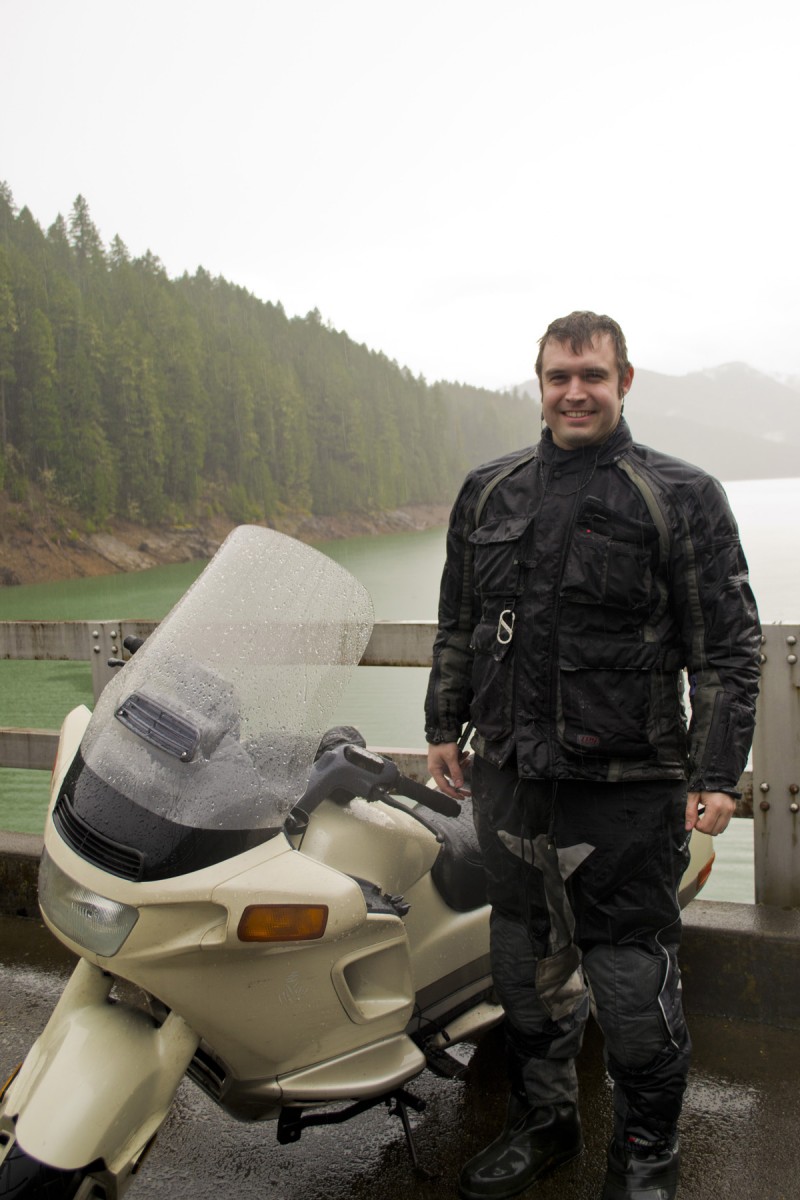
Other Honda Pacific Coast PC800 Tire Resources
Clark Rice from the PC800 Facebook group put together a spreadsheet that includes a number of potential PC800 tire choices based on what is available on the market as of May 2018. If you choose one of the tires on the list that isn’t in my spreadsheet above, PLEASE CONTACT ME AND LET ME KNOW YOUR THOUGHTS. I will then put it on the list above.
Also if please contact me with any information you’d like me to include on that spreadsheet above. I’m still looking for PSI information and mileage information on many tires, and I want your thoughts and feelings on the tires — especially if there’s anything that other PCers should know when they’re selecting a new tire.
